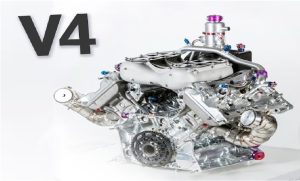Spinal Cord Anatomy and Injuries: A Guide

Spinal Cord Anatomy
Among the many parts of our central nervous system, the spinal cord plays a crucial role. It controls and coordinates the body’s activity. Our brain is surrounded by the skull, and our spinal cord is surrounded by bones called vertebrae. Both of them are protected by a protective membrane. This membrane and the vertebrae form the spinal column or our backbone.
Our spinal cord is surrounded by the backbone, which begins at the base of our skull and ends just above our hips. Even after being protected, sometimes the Spinal cord might face some injury. In that case, you must immediately seek expert medical advice to avoid further strain and serious issues.
This blog aims to make you understand the basic anatomy and structure of the spinal cord, which indirectly forms a large part of your day-to-day activities. In the later part, the focus will shift to the types of possible injuries your spinal cord may encounter. As it forms a crucial part of our central nervous system, the treatment for such injuries comes under the department of Neurology. Keep reading to add more to the repository of your knowledge.
Anatomy
The spinal cord stretches roughly 18 inches from the base of the brain to just below the last rib in the waist area. In females, the spinal cord is about 43 cm long, while in males, it is longer by 2 cm, making it acquire a length of 45 cm. Its primary function is to transmit messages between the brain and the body, which allow us to move and feel sensations. Messages are sent and received by the spinal cord through neurons in the spinal cord.
The cervical (neck), lumbar (lower back), and thoracic (chest) form the three main parts of the spinal cord. Apart from these, there are also three other layers of tissues that protect the spinal cord. They are the dura mater, arachnoid mater, and pia mater. These layers are also referred to as ‘meninges’.
Functions and importance
The Spinal cord performs some major important functions within our body, which include-
- Carrying signals from the brain to the other major body parts
- Receiving information from the rest of the body to the brain through touch, pain and pressure.
- Acting involuntarily is independent of the brain in conducting motor reflexes.
Spinal Cord Injuries
The spinal cord is a very sensitive part of your body and is, therefore, prone to injuries. Spinal cord injury refers to injury caused to the spinal cord as a result of some trauma like a car crash or diseases like cancer. The majority of these injuries are due to reasons like road accidents, physical violence, gunshot wounds, sports injuries due to falling, etc.
According to an article published by the World Health Organisation (W.H.O.), the risk factor of such injuries in males are most in young adulthood (20-29 years) and post the age of 70. In the case of females, the risk is the most in adolescence (15-19) and after post-the age of 60. People with spinal cord injuries are about five times more likely to die prematurely. The Mortality rate also depends on the level of injury, severity and availability of quality medical facilities on time.
The physiologic state immediately after a spinal cord injury is called Spinal Shock, which results in loss of spinal cord function depending on the level of the injury. These include loss of reflex activities, paralysis, and absent bowel and bladder control.
Types of Spinal Cord Injuries and their impact
Injuries to the Spinal Cord can be mainly of two types- complete injury and incomplete injury. When one loses the complete ability to sense and feel around the wound, it is referred to as a complete injury. In contrast, in the case of an incomplete injury, the injured is allowed to perform some sensory and motor functions. In most cases, the spinal injuries are complete.
Spinal cord injury not only impacts the spinal nerves but also affects other vital organs. It can often lead to paralysis, which can be of three major sub-types.
- Tetraplegic
- Paraplegic
- Triplegic
Tetraplegic paralysis is when the injury results in total or partial loss of all four limbs. On the other hand, Paraplegic affects the sensation and movement in all four limbs and the trunk. It does not necessarily affect the arms. Triplegic affects the upper and lower extremity of the face.
Therefore, To find the best neurosurgeons in Mumbai, you can visit the Nanavati Max Super-speciality hospital.
Symptoms and first-hand remedies
A person may suffer a spinal cord injury if there is a head injury with a change in their level of consciousness and severe pain in the back and neck. Other symptoms may include weakness, numbness, or lack of control over the neck or other body parts.
In that case, the following steps must be followed as a first-hand remedy-
- Do not move the affected person with force.
- Place a heavy towel on both sides of the neck to prevent movement.
- If a person has a helmet on after an accident, then do not remove it on your own.
- Contact a doctor, especially a neurologist or a neurosurgeon, immediately.
Conclusion
This blog highlights the basic anatomy of a spinal cord, the types of spinal injuries, how to identify an injury, and take the necessary steps to help the person suffering. In case of any severe symptoms, you must visit a nearby hospital. Nanavati hospital has state-of-the-art medical facilities to treat spinal cord injuries and others like stroke recovery treatment, nerve damage, etc. If you witness severe symptoms, please visit the hospital and consult their professional doctors.
Also, read other blogs on this sites







